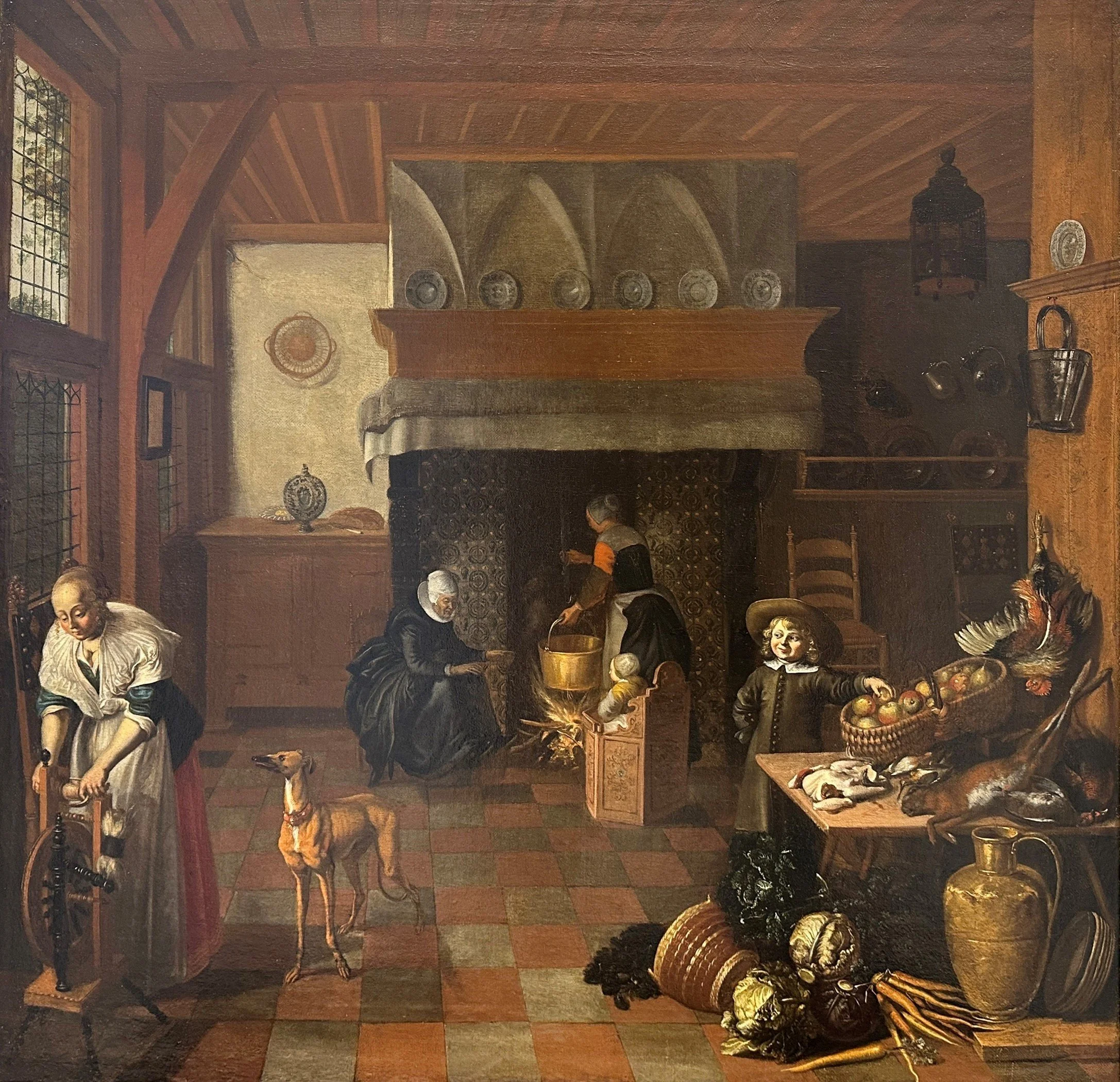DANIEL VERTANGEN (The Hague 1601 – Amsterdam 1681)
A Kitchen Interior
indistinctly signed in the lower right
oil on canvas
25.9 x 24.8 inches (66 x 63 cm.)
PROVENANCE
Private Collection, Brussels
Alan Jacobs Gallery, London by November 1985, from whom acquired by
Private Collection, Connecticut, November 1985 until the present time
LITERATURE
London, Alan Jacobs Gallery, Collector’s Choice: An Exhibition of Dutch and Flemish XVIIth Century Old Master Paintings, Summer, 1985, no. 11, illustrated
The Burlington Magazine, volume 127, October 1985, p. lvi, in an advertisement
for the Alan Jacobs Gallery
The painting was confirmed as Daniel Vertangen in 1985 by Willem L. van der Watering.
Daniel Vertangen was the son of Pieter Vertangen from Antwerp and Sara de Hommel. He married Anna Coppens and had two sons Lodewijk, and Daniel who was also a painter. It is believed that Vertangen was either a pupil of Cornelis van Poelenburgh before 1617 or an employee in the studio after 1626. It is known that he worked in Copenhagen from 1658 – 1659 and in Amsterdam from 1671 – 1681.[1]
He is mainly associated with Arcadian landscapes of Biblical or mythological themes in the manner of Poelenburgh, but by the 1660s Vertangen took up portraiture and works of genre which at the time must have proved more lucrative but today are rarer.[2]
In our kitchen scene various vegetables, cooking implements, and a shopping pail lay strewn on the tiled floor in the right corner next to a table laden with game and a large basket of apples. Within this fastidious and well-appointed interior, the female members of the household fulfill their designated roles. A maid is about to hang a large pot over the flames of the hearth while the mistress of the house warms her hands before the fire. A young child seated in a highchair looks on. According to contemporary domestic books of conduct, the mistress of the house rather than just giving the servants orders should work alongside them. Light pouring in from the paned windows on the left walls illuminate a comely maid spinning, “a time-honored theme of domesticity”[3] while attentively watched by a greyhound. With all eyes turned away a humorous note is injected by the mischievous boy surreptitiously stealing an apple from the table. Perhaps most importantly cooking was viewed as an essential key to a happy and harmonious family life, a belief to which this kitchen scene pays tribute.[4]
[1] Biographical information taken from “Daniel Vertangen” on rkd.nl (RKD Explore) website.
[2] Nicolette C. Sluijter-Seijffert, “Van Poelenburch’s Best Pupils” In his Milieu Essays on Netherlandish Art in Memory of John Michael Montias, Amsterdam University Press Ltd., 2006, unpaginated.
[3] Wayne E. Frantis, Paragons of Virtue, Women and Domesticity in Seventeenth Century Dutch Art, Cambridge University Press, 1995, pp. 30, 86-87, 102, 104.
[4] Ibid, pp. 86 – 87.
